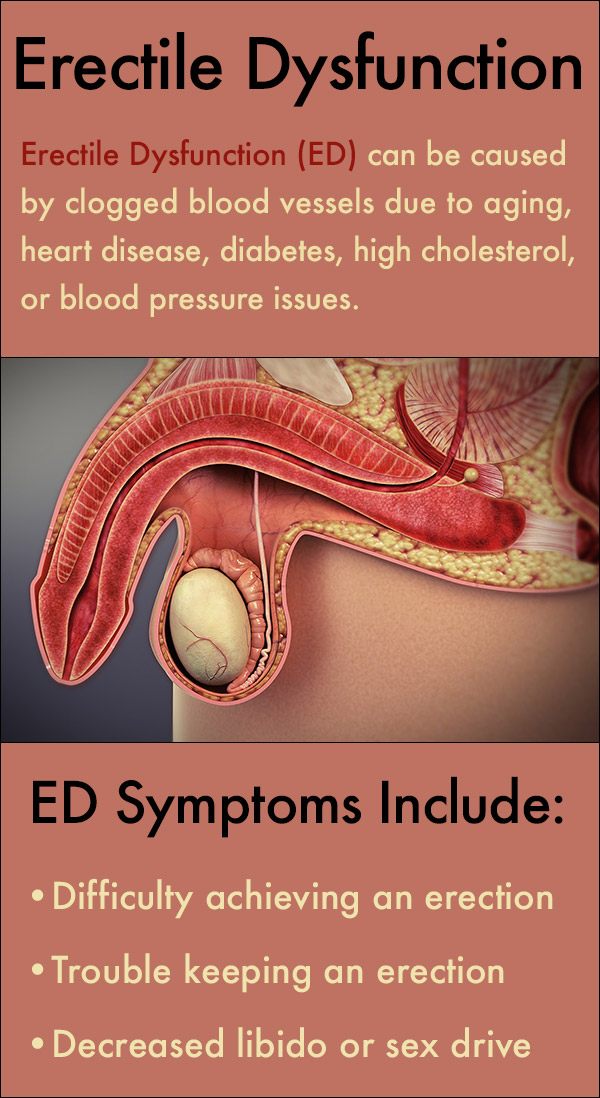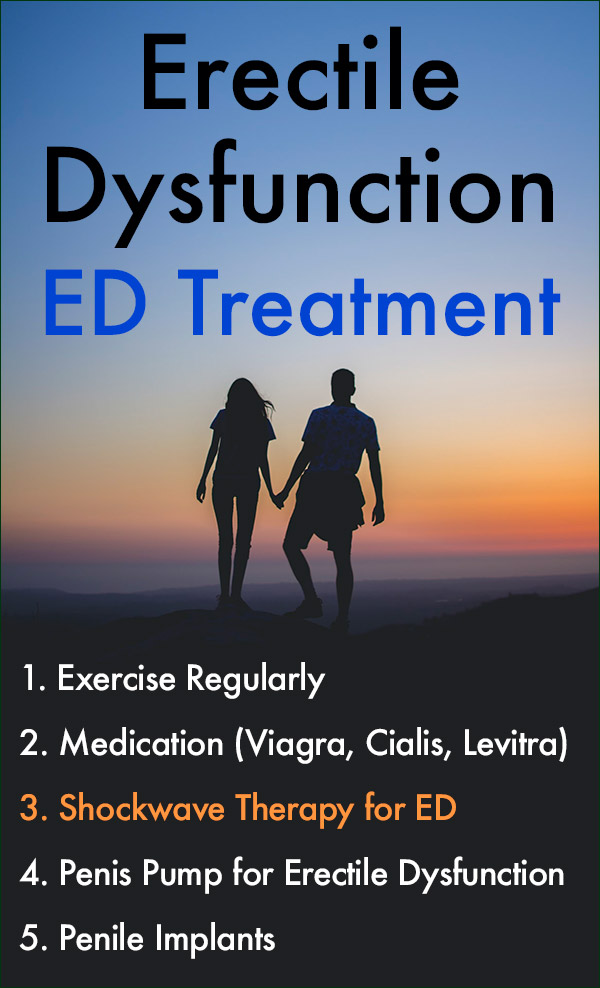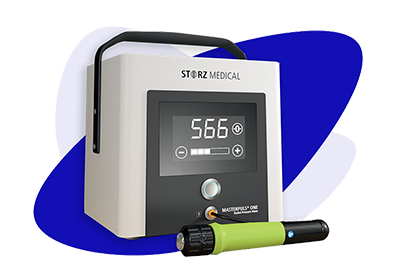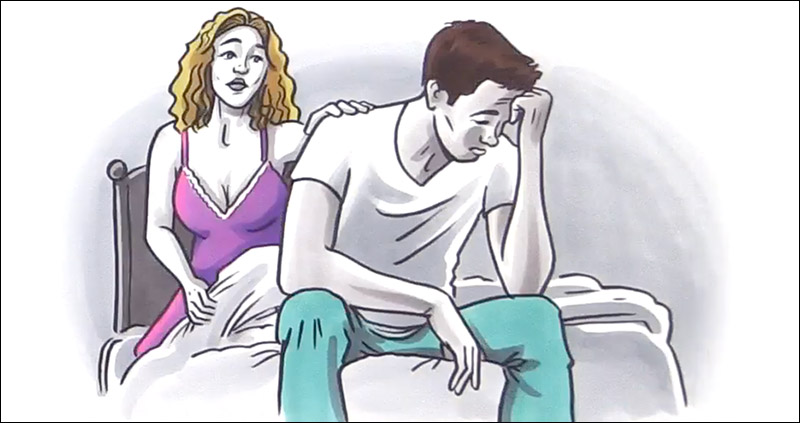Talking to your doctor about erectile dysfunction symptoms or ED treatment is never the most comfortable conversation.
In truth, though, ED is much more common than most men might realize, and the prevalence of this condition increases for men as they age.
Some widely cited research, particularly the Massachusetts Male Aging Study, suggests that around 52 percent of men aged 40 to 70 are likely to experience some form of erectile dysfunction.
Still, it’s understandable why some men might try to ignore the condition and hope it gets better, or simply keep postponing a visit to the doctor.
The good news, however, is that there are effective treatments for some kinds of ED, and the quicker the condition is diagnosed and a patient learns what causes erectile dysfunction, the sooner things can, potentially, get back to normal.
What is Erectile Dysfunction (ED)?
Put simply, erectile dysfunction, or ED as it is commonly called, is the inability to get or maintain an erection that stays firm enough for sex. It is a form of sexual dysfunction sometimes referred to as “impotence.”
That said, difficulty getting or maintaining an erection every once in a while is not necessarily the same thing as having ED.
“Male sexual arousal is a complex process that involves the brain, hormones, emotions, nerves, muscles, and blood vessels,” as the Mayo Clinic puts it. Trouble with any of these elements, even issues like stress, anxiety or depression, can cause temporary ED symptoms.
If the problem persists, though, it’s important to see a doctor because there might be an underlying health issue that’s causing the condition.
One of the more common causes of erectile disorder symptoms is known as Vasculogenic ED, which simply means poor blood flow. The penis needs a healthy blood flow to get and stay erect. If blood flow to the penis is restricted even a little bit, it can make achieving and keeping an erection difficult.
Unfortunately, diminished blood flow is a symptom of the aging process. There are other conditions, though, that can lead to poor blood flow.
ED Symptoms Related to Blood Flow Can Be Caused by the Following:
- Clogged blood vessels, medically known as “atherosclerosis”
- High cholesterol
- Blood pressure issues
- Heart disease
- Diabetes
Other Causes of Erectile Dysfunction Include:
- Low testosterone
- Obesity
- Medical conditions like Parkinson’s disease or multiple sclerosis
- Substance use (alcohol, tobacco, illegal drugs or prescription medications)
- Peyronie’s disease
- Insomnia or sleep disorders
- Prostate issues
- Stress or depression
It’s important to know the signs and symptoms of erectile dysfunction so that if it does occur, for whatever reason, a person can seek out appropriate ED treatment.

Typical Erectile Dysfunction ED Symptoms
The erectile dysfunction symptoms of ED are usually pretty straightforward and fairly easy to identify and diagnose.
The Most Common ED Symptoms Include:
- Difficulty achieving an erection
- Keeping an erection
- Sometimes a reduction in a person’s libido or sex drive
Experiencing any of these symptoms can be stressful and cause anxiety or relationship problems that might even exacerbate the condition.
This is why it’s important to see your doctor if the problem continues. A doctor’s visit to find out what causes ED typically involves talking about your medical history, symptoms, and getting a physical examination.
A physician might also ask for a urine sample or perform a blood work analysis to rule out other underlying causes.
Common Erectile Dysfunction Treatments for ED
There are a range of ED treatment approaches for this condition that will depend on the specific cause of erectile dysfunction.
Successful ED Treatment includes some of the following:
1. Exercise Regularly
Believe it or not, there’s plenty of research that shows habitual exercise, either moderate to more vigorous, improves blood flow in the body.
Regular exercise can help reduce other risk factors that may lead to ED, such as keeping blood pressure, cholesterol, and diabetes in check. A healthy diet in conjunction with exercise can help even more.
2. ED Medications for Erectile Dysfunction
There are a number of oral ED medications on the market, such as:
- Sildenafil (Viagra)
- Tadalafil (Cialis)
- Vardenafil (Levitra)
Erectile dysfunction medications use nitric oxide to relax muscles in the penis, which allows for better blood flow to the affected area.
However, there are some side effects associated with ED medications that many men find uncomfortable.
Drawbacks to using erectile dysfunction medication as an ED treatment include:
- Medications don’t eliminate or cure ED
- Results are temporary and usually only last for 2 to 4 hours depending on the type of ED drugs taken orally and the dosage
- Erections lasting more than 4 hours might require medical treatment
- Side effects can include headaches, nausea, flushing of the skin, or nasal congestion
- Possibility of dangerous drug interactions with other medications or excessive alcohol consumption

3. Shockwave Therapy for ED
Shockwave Therapy for ED is a non-invasive treatment option that works by delivering gentle pressure waves to the penis, which break up plaque or blockages that diminish blood flow. It is also known as Extracorporeal Shock Wave Therapy (ESWT).
Shockwave Therapy for erectile dysfunction triggers the body’s own biological healing response and allows for a natural increase of nitric oxide without the need for drugs or prescription medications. It also promotes angiogenesis, which is the formation of new blood vessels.
In addition, Shockwave Therapy has shown to be a highly effective ED treatment method with an 85 percent success rate for patients with vasculogenic ED.
Because Shockwave treatment is non-invasive and non-surgical, there is no need for anesthesia, additional recovery time for healing, and no negative side effects.
The most appealing reason for using Shockwave Therapy for erectile dysfunction is that it produces long-term results. This allows patients to return to a normal, spontaneous sexual routine without the use of medications or other devices to provide an erection when needed.
4. Penis Pump for Erectile Dysfunction
A penis pump for erectile dysfunction is a tube, usually powered by a battery, which is placed over the penis to create a vacuum. The suction caused by the vacuum helps to pump blood into the penis to create an erection.
To keep blood from flowing out of the erect penis until after intercourse, a tension ring is placed at the base of the penis. The tension ring is removed when an erection is no longer necessary.
One of the drawbacks to this ED treatment method is the possibility of bruising the penis when using a penis pump for erectile dysfunction.
5. Penile Implants
Penile implants for erectile dysfunction involve a surgical procedure that is typically suggested for patients when other treatments have been unsuccessful.
This treatment method involves implanting either an inflatable or flexible rod on either side of the penis. Though this procedure can be effective, any form of surgery comes with risks and a recovery period, so it should be considered carefully.
It can be difficult and a bit scary for many men to experience erectile dysfunction at some point in their life as they age. But knowing there are various forms of successful treatment for ED symptoms can put them ease and keep their sexual performance alive and well.
Erectile Dysfunction image courtesy of Scientific Animations.






